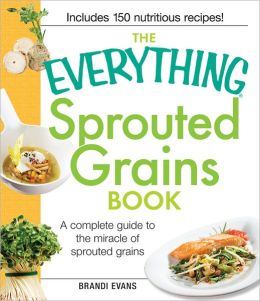I read a cool book last year about having your own homestead and making your yard functional--ok I read a few. But I can't remember any of them by name, except Gaia's Garden. However, I ran across a fun idea: building an ecosystem for you plants and fruit trees to help sustain each other. This means not just having a vegetable bed or strawberry patch, but putting things together to help balance out each other. So adding comfrey, clover and stawberries and marigolds beneath your apple tree can help every plant take care of eachother. It's companion planting on a large ecosystem scale!
I already posted a little on companion planting, but this is about Fruit tree guild info I've found and hope to implement this summer when I buy a few trees for my less than 1/4 acre. :) And this is also why I'm building a chicken tractor, to help take care of weeds and have a more natural functional garden/part of my yard.
------
Here's an article I found to help summarize what a guild is and why...
What is a permaculture guild?
A permaculture guild is a carefully assembled selection of plants (and animals), typically gathered around a central plant.If you don’t like to be restricted, you can choose a central selection of plants, say, fruit trees in a mandala garden.
The supportive plants are selected to enhance the self-sufficiency of the central plant by reducing the work needed to manage it and/or improving its yield.
Why choose to grow plants in guilds?
Each plant needs at least 4 things: Nutrients (mainly Nitrogen), Mulch, Pollination, Protection (from pests and competition). It’s only natural that each plant we choose should not only serve as food, but also provide a surplus of at least one service to the guild. Some, like comfrey, provide many. |
| Here's an example... |
The main benefits of permaculture guilds
1. Easy picking
Plants that love to grow together often complement in taste, too. Dill, grown under apple trees provides a habitat for predatory wasps and also tastes great with apples.Marigolds, grown with cucumbers deter nematodes. They also make for a nice salad together.
2. Source of nutrients
Nitrogen fixing plants (clover, lucerne, lupinus and other legumes) transform nitrogen from the atmosphere into ammonia, the source of nitrogen that is readily available for other plants to use. Nitrogen is the main nutrient that plants use.Animals help to fertilize the soil as well. A chicken tractor is one example.
3. Act as mulch
Many plants that grow low to the ground can be used as a living mulch. They retain moisture in the soil, prevent soil erosion, deter weeds and generally have all kinds of benefits. Excellent examples are clover (which also fixes nitrogen and thus can be used as a green manure), spinach, strawberries, …Additionally, every plant that sheds its’ leaves in the autumn also contributes to the mulch.
4. Provide shelter from extreme weather conditions
Nitrogen fixing trees, such as tagasaste or acacia, interplanted with fruit trees, not only provide the nutrients and mulch, but also reduce frost dangers and provide shade for sensitive trees (like citrus)Strong trees, like poplar, also provide shelter from damaging winds.
5. Control pests
Introducing and encouraging helpful animals greatly reduces our work and provides many benefits in the long run.Ducks are ferocious snail and slug eaters. As the great Bill Mollison put it: “You don’t have a slug excess, you have a duck deficiency.”
Beneficial insects can be encouraged by planting a few insect hosting plants: buddleia, salvia, … This will also increase the numbers of insect eating birds. Remember, some insects are voracious predators in their larvae stage.
As already mentioned, marigolds deter nematodes that often damage tomatoes, potatoes, and eggplants.
Other plants can be used for trap cropping. Geraniums are used in rose gardens, because they are toxic for Japanese Beetles, a costly pest that feeds on nearly 300 plant species.
6. Enhance flavor
Some plants (e.g. herbs) actually improve the taste of those that grow around them.7. Serve as a safety net
By growing many different plants in the same space, we guarantee ourselves at least some yield, even if some of them don’t live up to their potential.Are guilds the same as companion planting?
No. Guilds can also be observed in nature. An example is the White Oak guild. Companion planting, as the name suggests, is a type of planting (actually a form of polyculture), used in gardening and agriculture. Guilds can be thought of as an extension of companion planting.Probably the best known companion planting technique is The Three Sisters. It consists of corn, which provides the support for climbing beans, which fix the nitrogen for the squash, which in turn serves as a mulch. This type of companion planting was pioneered by Native Americans.
-------
Deciduous Guild (eg. apples, plums, pears, peaches)
Require coldest places, will tolerate heavy soils, will tolerate windy positions (esp. peaches and nectarines). Once established are most tolerant in wet/dry fluctuations.
Support species include comfrey, clover (white, red, subterranean), parsnip, spring bulbs, violets, borage, phacelia, yarrow, forget-me-nots, goldenrod, nasturtium, tansy, alfalfa, vetch, cow parsley.
Here is one helpful Chart from Gaia's Garden book, but i saved a larger comprehensive one as a pdf.
---
And A Chart for edible weeds:
Here is one helpful Chart from Gaia's Garden book, but i saved a larger comprehensive one as a pdf.
---
And A Chart for edible weeds:
























